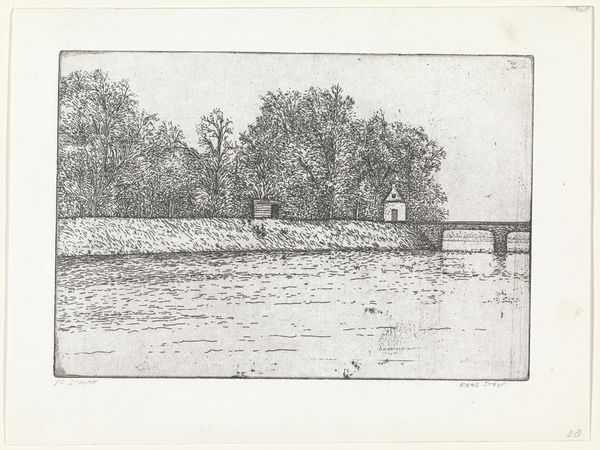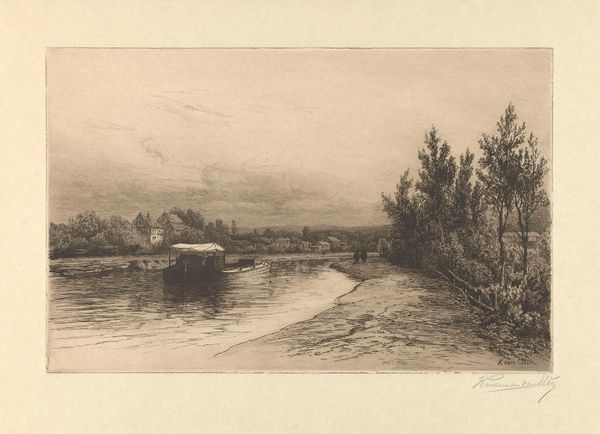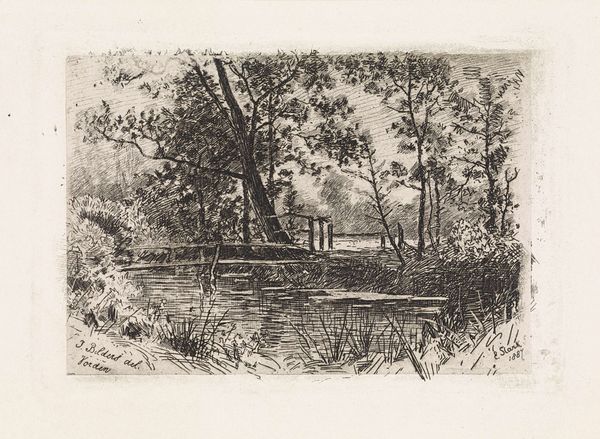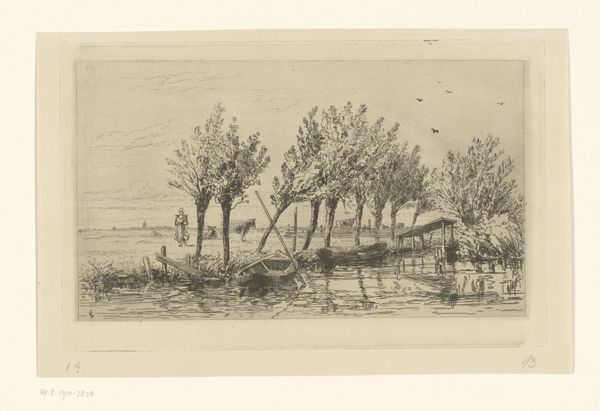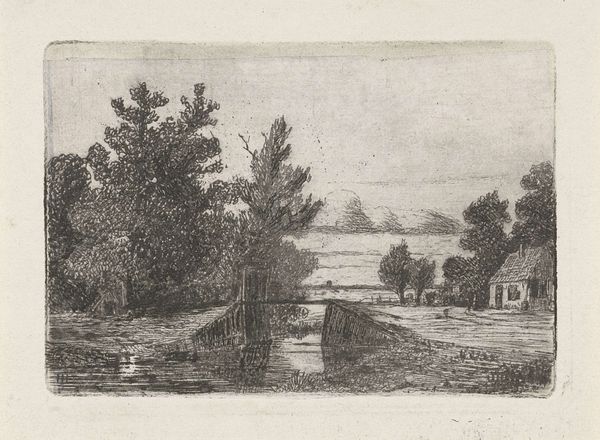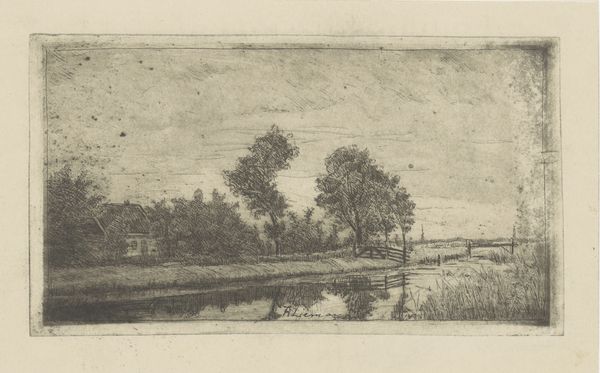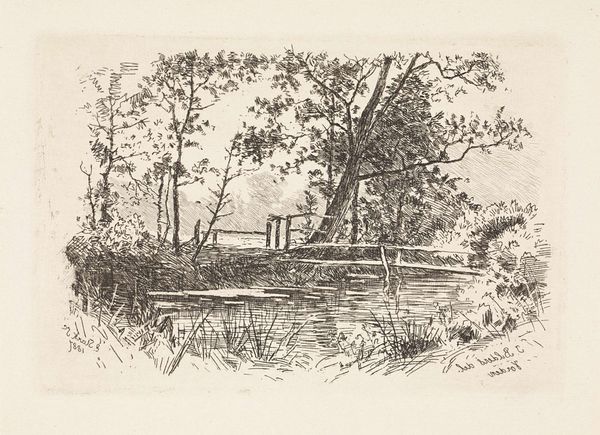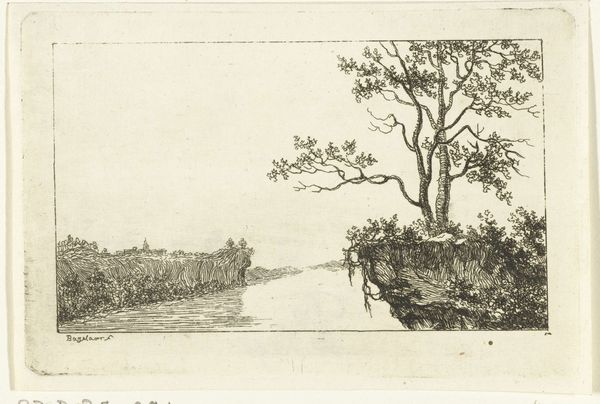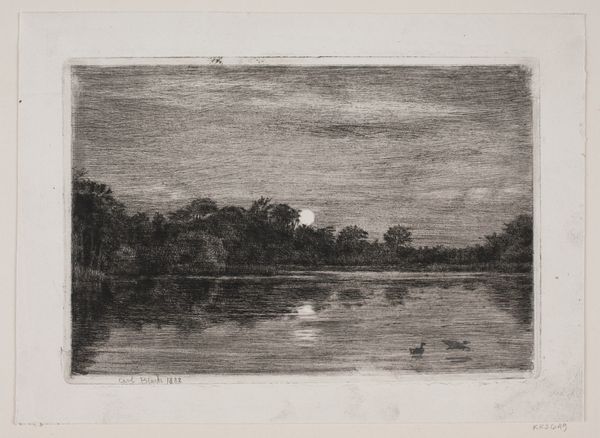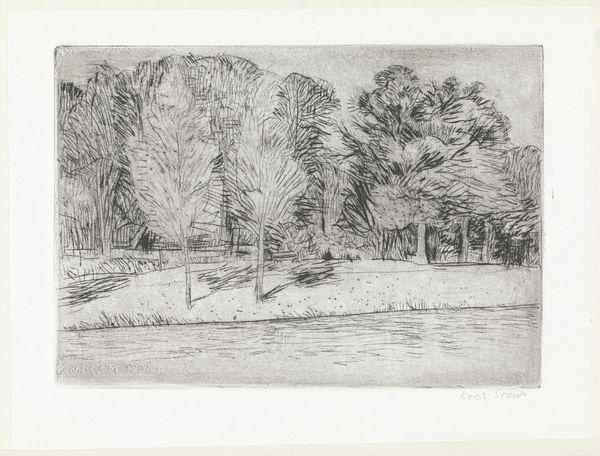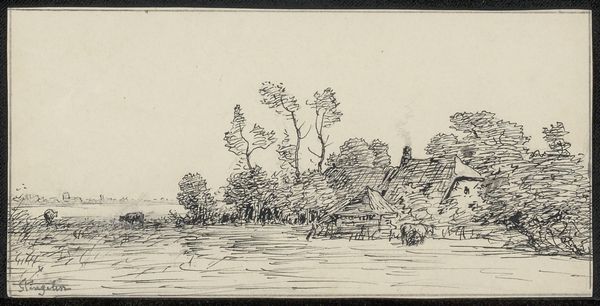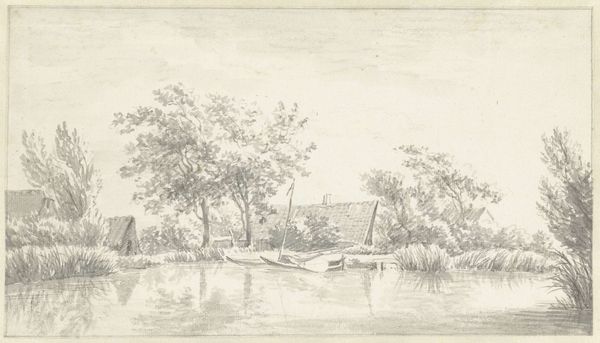
print, etching
# print
#
etching
#
landscape
#
realism
Dimensions: height 144 mm, width 182 mm, height 115 mm, width 166 mm
Copyright: Rijks Museum: Open Domain
Curator: Here we have Kees Stoop’s etching from around 1976, titled "Brug een bosschage aan water," or "Bridge near a thicket of trees over water." I’m drawn immediately to the textures; what's your initial take? Editor: Bleakness, and an almost suffocating density. The tangled vegetation overshadows everything, and the stark monochrome amplifies the somber mood. There's a tension in the water's surface, as though something's churning beneath. Curator: I see it too, particularly when we consider etching’s role in reproducing and distributing images to the masses. Stoop manipulates this to represent everyday scenes—his art democratizes the experience, and it resonates to observe him doing so in a traditional format. The detail he achieves speaks to his labor and precision. Editor: Yet, those specific compositional details contribute a lot. Water traditionally represents the subconscious; here, the reflected images are smudged and indistinct. Similarly, the bridge is partially hidden. Are these broken connections, or just obstacles we need to work our way across? Curator: Maybe both. Consider that, although it appears spontaneous, prints such as these undergo rigorous processing. The layers of acid, the timing and care in drawing on the plate. Editor: Indeed! Let’s talk about that bridge – a crucial symbol of transition and connection throughout history and myth, yet here, it feels muted and obscured, almost irrelevant against nature's sheer presence. Curator: That reminds me, in looking at the context and craft, there’s a definite tie between how labor physically manifests here. Each mark speaks of the hand. Stoop presents his labor plainly, almost humbly; look at the subtle changes in weight he's able to coax out through the etching. It mirrors the understated nature of daily Dutch life in that era. Editor: A powerful and intimate lens into a specific cultural landscape, wouldn't you agree? One that asks more questions than it answers. Curator: Yes. I find my mind drawn to the connection he makes to his contemporary printmakers, and, as the image suggests, the hidden undercurrents beneath it all.
Comments
No comments
Be the first to comment and join the conversation on the ultimate creative platform.
